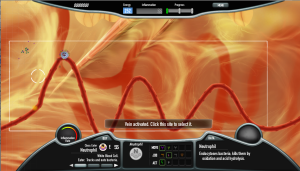What is my story? The Seattle Biomedical Research Institute, down the street from me, focuses on Infectious Diseases. I was checking them out, since I might want to work there as a biochemist if some of these grant applications don’t quite work out… (Insert long painful list of details here….)
Anyway, the Seattle Biomedical Research Institute has a great website and they invite us public folk to tell our story of how we also wish to help stop infectious disease. I submitted a story and naturally, I am posting it here as well! My Infectious Disease Related Story: I am a biochemist, I did a post doc in Carl Nathan’s lab where I screened 38,000 compounds for their ability to block DNA repair in Mycobacterium smegmatis and our candidate also worked inM.tuberculosis. My research on pubmed.
However, despite the fact that I was having a successful career in research, I was distressed by the fact that no one in the public 1. knew why my work was relevant and 2. understood even the most basic aspects. Additionally, I was discouraged knowing that we have cures that work or we have the possibilities of cures if we only had more funding to bring them to people or to fund their development. Understanding the basics of cell biology, I believe, is vital for an understanding and support for infectious disease research. This is why I left the lab and starting learning about video games. I am the PI on an R25 grant from the NIH, National Institute for Allergy and Infectious Diseases, awarded to the FAS Learning Technologies Program at the MICDL.org.
Game evaluation and distribution work are funded by the Entertainment Software Association Foundation. Now I am about 3 months from releasing Immune Defense, a Real Time Strategy (RTS) game in which the player can deploy 7 types of white blood cells against bacteria, parasites, viruses and even cancer… Our goal is to teach the basics of cell biology. What proteins do, what receptors do, how cells respond to signals in the environment, how random events lead to predictable behaviors and how the immune system is powerful at killing and how proteins allow for interpretation of signals and make their interactions specifically targeted and how pathogens manage to evade the killing… The player must battle HIV, TB, Listeria, a Malaria-like organism and many many more.
IMMUNE DEFENSE game description: Players use brand new Microbot technology to control cells and molecules. Players deploy Eater cells (Neutrophils) with their LPS receptors (TLR4) to eat E. coli bacteria. Eaters have powerful “Poison Pods” (Phagolysosomes) full of acid and oxidizing molecules that dissolve E. coli bacteria effectively. All is well, until Streptococcus pneumoniae comes along and your LPS receptor no longer works… Your trusty collaborating scientists however, have given you an upgrade, you can now control the Complement Receptor on Eater Cells. And the Complement receptor works, however, it has a lower affinity, so it takes a bit longer to catch those rascally Streptococcus pneumoniae … which is fine, until some Staphylococcus aureus show up. The Staphylococcus aureus take a long time for the Eater cells to dissolve…. 

